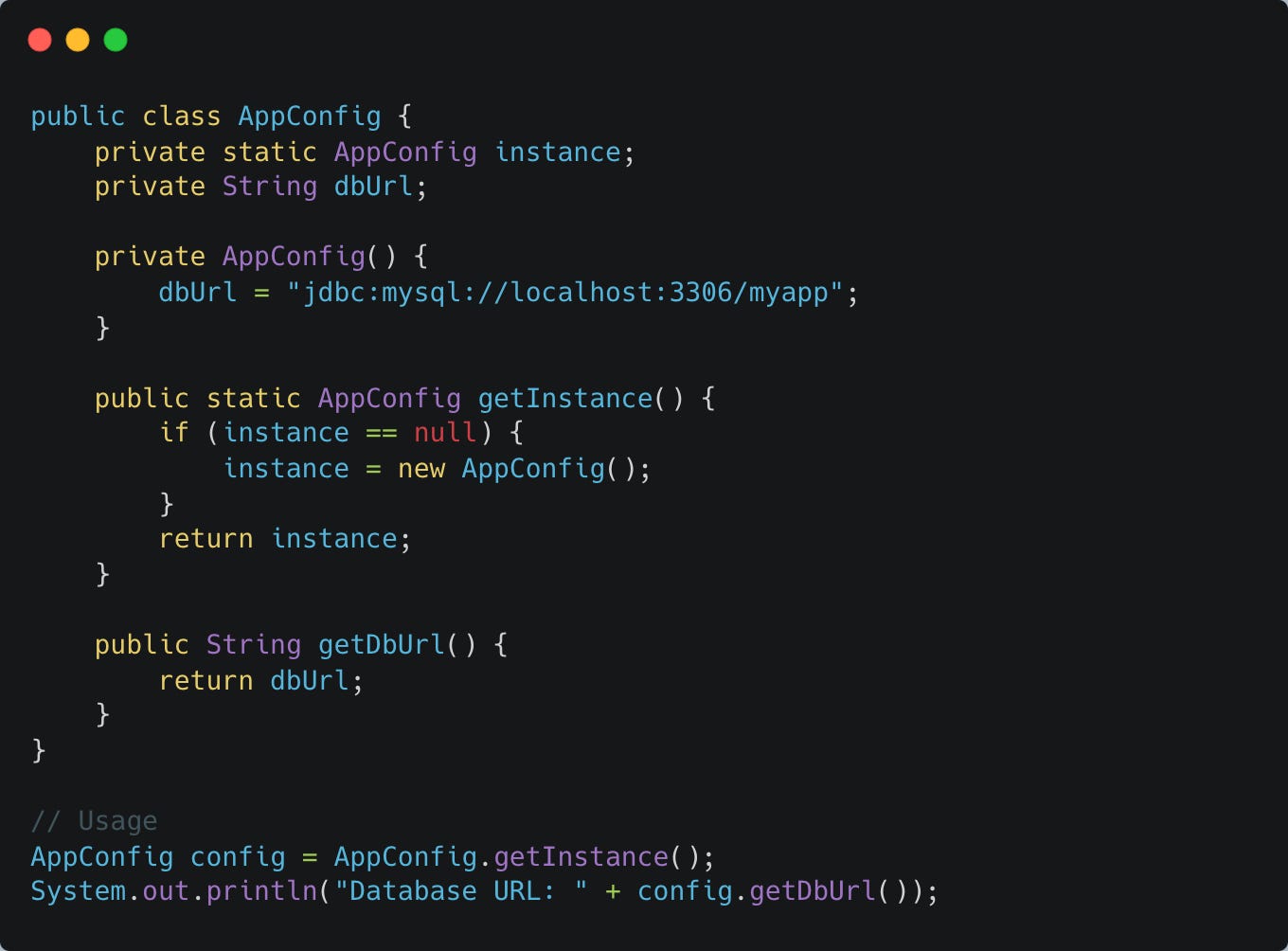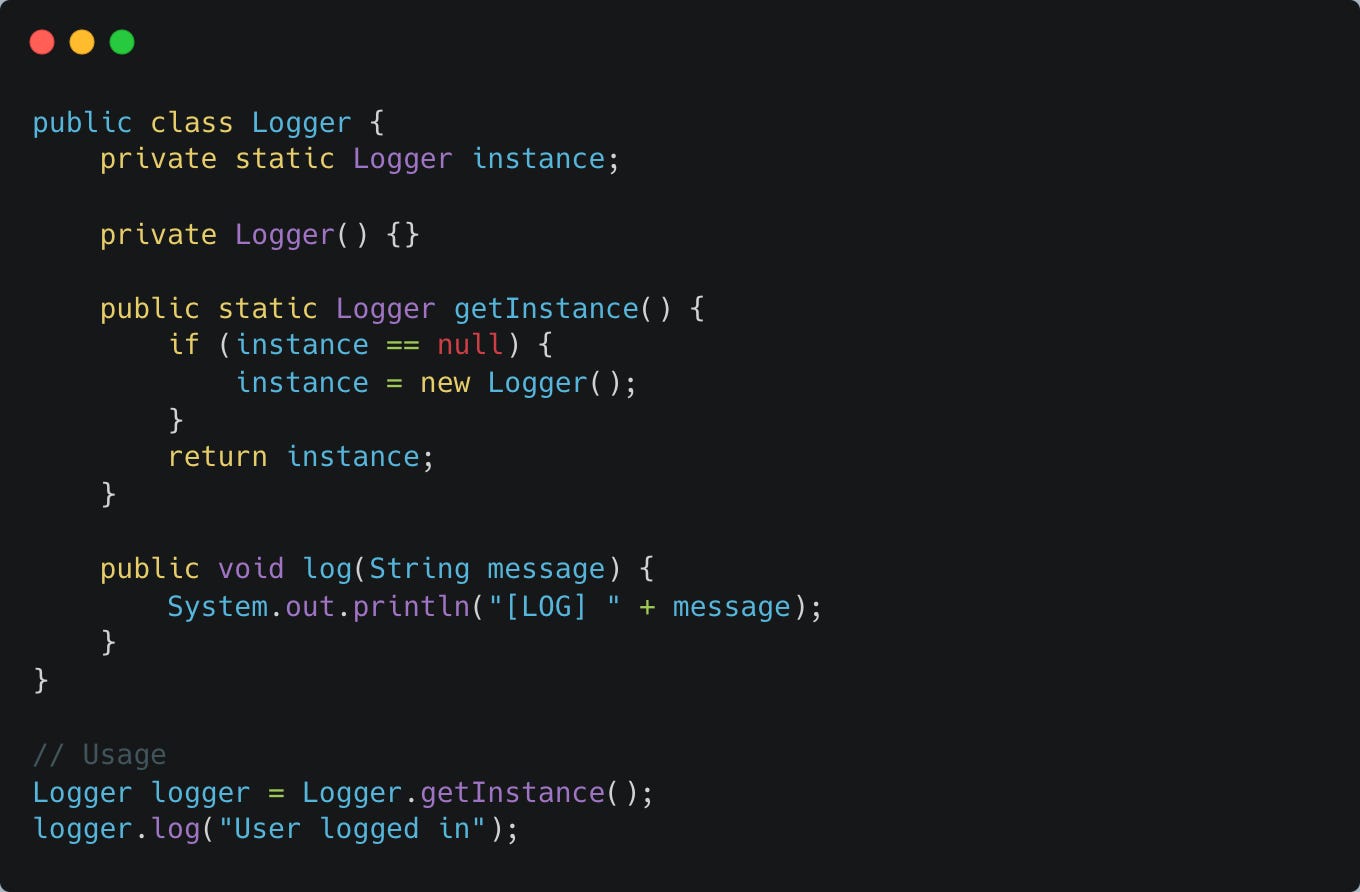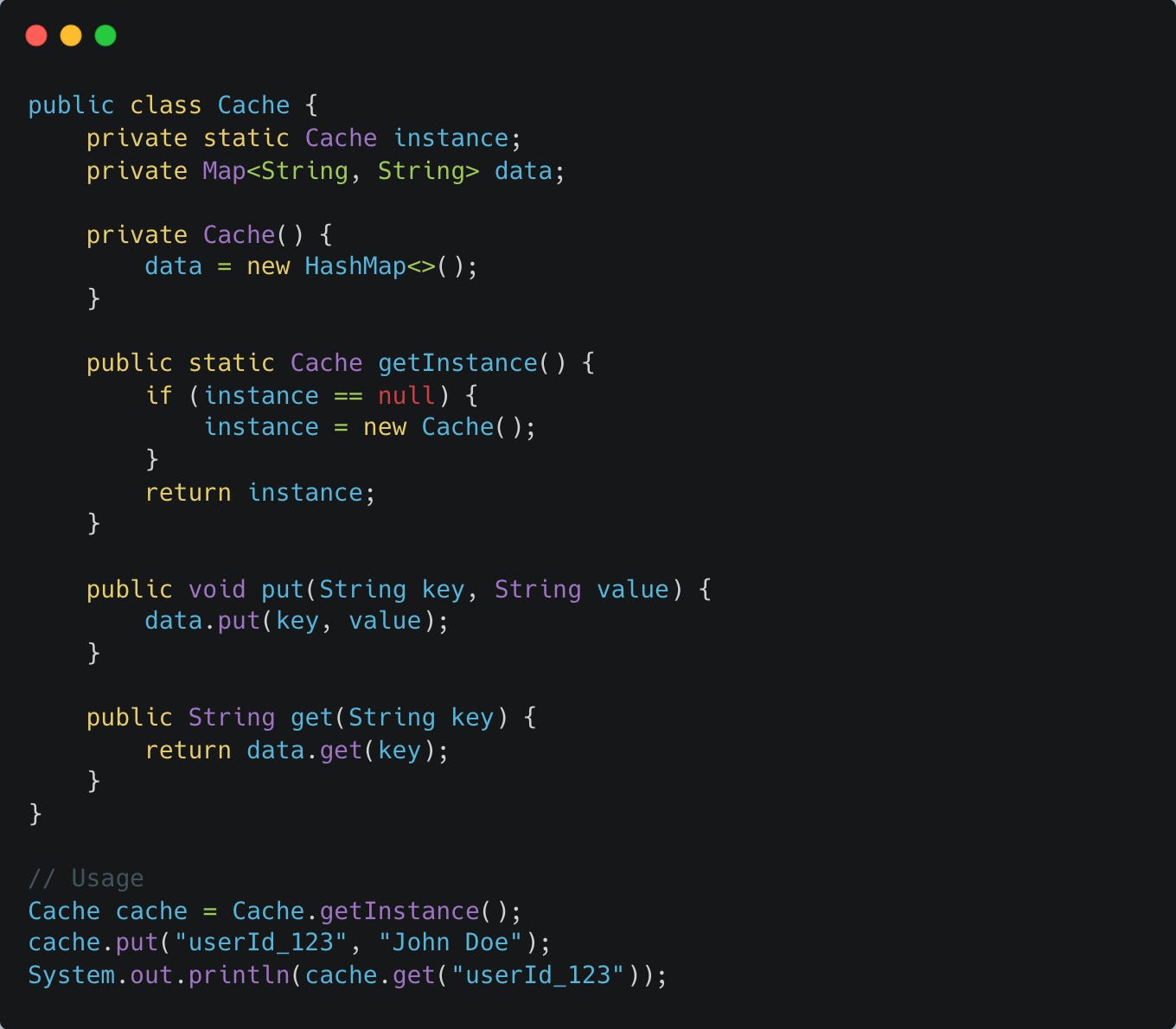In software design, ensuring controlled access to a resource is crucial. The Singleton Design Pattern achieves this by restricting the instantiation of a class to a single object. This pattern is often used to manage shared resources, configuration settings, or application-wide states. Let's delve into its intricacies with examples, advantages, disadvantages, and real-life scenarios.
What is the Singleton Design Pattern?
The Singleton Design Pattern ensures that:
A class has only one instance.
It provides a global point of access to that instance.
This pattern is implemented by creating a private constructor, a static instance, and a public method to provide access to the instance.
Detailed Implementation with Examples
Configuration Management
Imagine an app where multiple features need access to common settings like language preferences or database credentials. Instead of duplicating this data, you create a Singleton to store these settings. Any feature can then access the Singleton to fetch what it needs.Logging System
Logging is like keeping a diary for your application. Instead of each component writing logs to different places, a Singleton logger ensures all logs are recorded consistently.Cache Management
A Singleton cache is like a fridge where commonly used ingredients are stored for quick access. Instead of fetching the same data repeatedly from a slow database, you store it in a Singleton cache for faster access.
Real-Life Scenarios
Database Connection Pooling:
Only one instance of the connection pool is needed to manage multiple database connections efficiently.Printer Spooler:
A printer driver ensures that print jobs are managed by a single queue, avoiding conflicts between users.Game Settings in Multiplayer Games:
Shared configurations like game difficulty or graphics quality are handled using a Singleton.
Advantages of Singleton Design Pattern
Controlled Access
Imagine you’re running a library. If everyone can take out books without going through a librarian, chaos ensues. The Singleton acts like the librarian, ensuring only one centralized access point to a resource (like configuration settings or a database connection).Lazy Initialization
The Singleton instance is created only when it’s needed, saving memory and processing power. This is like preparing food only when guests arrive rather than cooking in advance and risking wastage.Global Access Point
Once the Singleton is created, it’s accessible from anywhere in your application. Think of it as a universally available toolkit—any part of your program can use it without having to recreate or carry its own tools.
Disadvantages of Singleton Design Pattern
Potential Bottlenecks
If multiple parts of your program try to use the Singleton at the same time (especially in multi-threaded environments), it can slow things down. It’s like a single water tap in a busy household—only one person can use it at a time.Testing Challenges
Singletons create a global state, which makes unit testing harder. Imagine you’re testing a bakery recipe, but someone changes the flour supply in the background—it makes it hard to predict results.Hidden Dependencies
When parts of your code rely on a Singleton, they become tightly coupled. If the Singleton changes, all dependent code may break, making updates harder.
How to Handle Disadvantages
Thread-Safety
Use techniques like synchronized blocks or double-checked locking to ensure the Singleton behaves correctly in multi-threaded environments. These techniques make sure that multiple threads don’t create multiple instances of the Singleton.Example:
Use Dependency Injection
Instead of directly creating and accessing a Singleton, you can inject it as a dependency where needed. This makes testing and maintenance easier.Limit Singleton Scope
Avoid using Singleton everywhere. Restrict its use to scenarios where a single instance is absolutely necessary, such as configuration management or logging.
When to Avoid Singleton
High Scalability Requirements: If your application demands distributed or cloud-based architecture, a Singleton might become a bottleneck.
Unit Testing: Singletons can make unit tests less predictable, requiring careful mock management.
Conclusion
The Singleton Design Pattern is a cornerstone of software development, offering a robust way to manage shared resources. While it provides undeniable advantages, its misuse can lead to tightly coupled and difficult-to-maintain code. Use this pattern judiciously, keeping scalability and testability in mind.
What are your thoughts on Singletons? Share your experiences or questions below!





